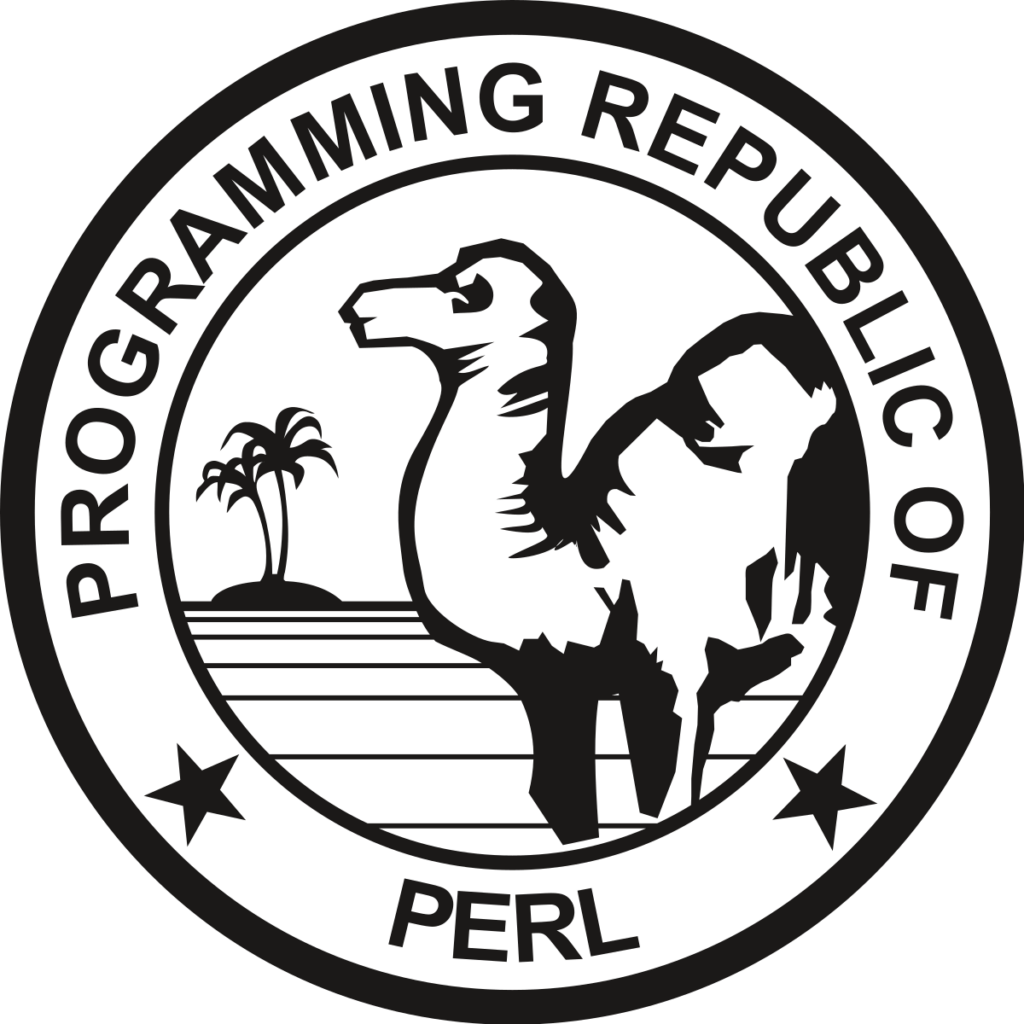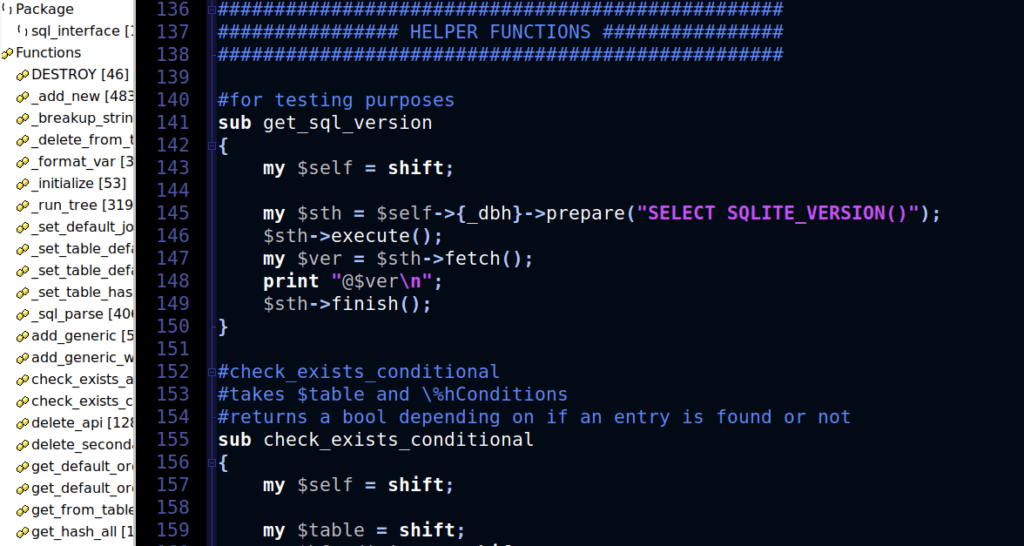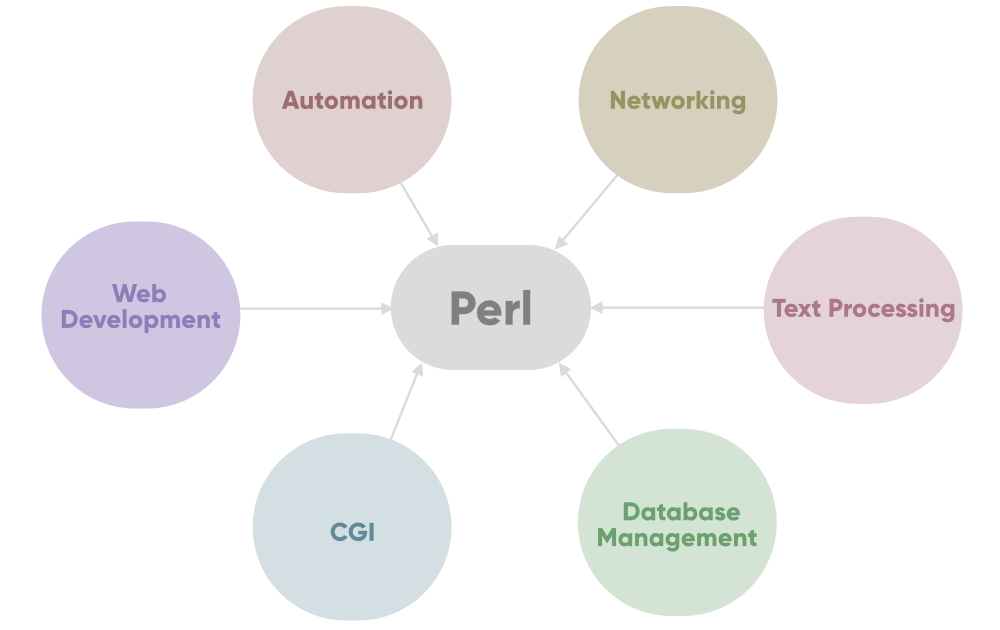If you are new to programming, you will almost certainly run into a language called Perl. What is this Perl, anyway? Simply put, Perl is a programming language that has been improved over more than 30 years, which makes it very powerful and full of features. But there is a lot more to it than just that.
In this article, we will proceed to give you an adequate overview of the language, covering its history, growth, strengths and more. Let’s dive in.
What is Perl?
Perl is a programming language that can be used for many different things. It was first made for manipulating text. Now, however, it is used for a wide range of tasks, such as system administration, web development, network programming, and GUI development, among others.
When it was being made, its ease of use was one of the most important things to think about. Developers can do a lot with only a small amount of code because the system is built in a smart way. It is so useful that people on the internet call it a “Swiss Army chainsaw“
History
Larry Wall created the programming language known as Perl in 1987 with the intention of simplifying the process of report processing. On December 18, 1987, version 1.0 was made available to the public for the first time.
The second version of Perl, which was introduced in 1988, featured an enhanced regular expression engine. The third version of Perl, which was published in 1989, included support for binary data streams. Perl 4, which was published in 1991, has improved documentation in comparison to preceding versions. The fifth version of the language was made available on October 17, 1994. It included a wide variety of brand new functions, such as objects, variables, references, and modules. On May 9, 2016, Perl 5.24 was made available.

The official logo for the Perl programming language and community is a coin-shaped logo with a camel’s head. It also has the words “Programming Republic of Perl” written on it. After the book Programming Perl, which was written by Larry Wall and Randal Schwartz and was the official programming handbook for Perl 4, came out in 1991 with a picture of a camel on the cover, the symbol became well-known. Wall himself made a lot of changes to the program, which led to it being released as Perl 5 in 1994. After that, the Perl community keeps giving the program help and making changes to it. In 2015, Perl 6 came out, and in 2019, it was renamed Raku.
Recommended reading: Top 7 Web Development Languages To Use In 2022
Raku
Raku is a sister language that is a member of the Perl family. It was not designed to be a substitute for Perl, but rather as its own thing. Nonetheless, there are libraries that allow you to call Perl code from Raku programs and vice versa. Raku was formerly known as Perl 6.
2020 til Now
In June 2020, Perl 7 took over as the main programming language from Perl 5. Initial plans called for Perl 7 to be built on Perl 5.32, and its release was expected to happen in the first half of 2021, with release candidates showing up earlier. This proposal was changed in May 2021, but no new release date or version of Perl 5 that would be used as a baseline was mentioned. After Perl 7 comes out, Perl 5, the version that came before it, will go into long-term maintenance. On the other hand, important bug fixes and security updates will still be made to supported versions of Perl 5.
Usage
The Web Tech Survey found that more than 101,449 websites use Perl, which is the tenth most common programming language. This means that it is the tenth most popular programming language.
Perl is much easier to learn and use than more formal programming languages like C and C++. Even so, the language is usually used to make more complicated computer programs. Because the language is good at manipulating text and can work with binary files, it is often used to make programs called “common gateway interfaces” (CGI).
Developers also use the language to build and launch applications. It is used by most software providers and makers to bundle and sell software in a business setting (including COTS and bespoke). Because it can manage and process huge amounts of data, it is used a lot in finance and bioinformatics.
How It Works
Perl is a scripting language that is known for being easy to use, popular, and well thought of by many. It can be used for many different things, like making the equivalent of DOS batch files or C shell scripts. However, the most common way to use it is to make CGI scripts for websites.

One reason why people share the source code for their apps is because Perl is a scripting language. This is one of the things that makes it useful. This lets you learn Perl by doing it yourself and also lets you download and change tens of thousands of Perl scripts for your own use. Most of the free code that comes with Perl is hard to understand, which is one of its downsides. It is easy to write it in a strangely confusing way.
Implementation
Perl is a language that is written in the programming language C and is interpreted. It also has a large number of modules that are written in both. The Perl interpreter is a huge 150,000 lines of C code that, when compiled, takes up one megabyte of space on most system architectures. The Perl distribution comes with more than 500 modules and has 300,000 lines of code written in Perl and 200,000 lines written in C. The interpreter is built on an object-oriented architecture, and the parts of Perl, like arrays, scalars, and hashes, are shown in the interpreter as C structures.
The interpreter goes through two phases in its life cycle: the compile phase and the run phase. During the compilation process, the interpreter turns the Perl code into a syntax tree. The Perl program is run by moving up the tree while the program is running. The source code for the Perl programming language is free, and it has 120,000 functional tests. During the building process, these tests are run to thoroughly test the interpreter and any other functional modules. If your changes pass all of these 120K functional tests, you can be sure that they won’t mess up the interpreter.
Recommended reading: 7 Best Online Web Development Bootcamps and Detailed Guide
The 9 Features of Perl
Perl is a programming language that uses parts of many other languages, like C, awk, sed, sh, and BASIC. The ones on this list are some of the most important.
1. Glue Language
The Glue language is a type of programming language that was made specifically for writing and managing code and programs that connect different pieces of software.
Perl is a glue language that makes it easy for programmers to connect interfaces and parts that wouldn’t normally work together. It comes with a database integration interface that works with third-party databases like MySQL, Oracle, Postgres, Sybase, and others.
2. Interpretation
Perl is an interpreted language, which means that the code you write can be run as is, without having to go through a compilation step, which makes an executable program that is not portable.
In the past, it was the job of the compiler to turn programs into machine code. When you run a Perl program, the code is first turned into a byte code, and then the byte code is turned into machine instructions as the program runs. So, it is not exactly the same as shells or Tcl, which take data literally and don’t use an intermediate representation.
Also, unlike most versions of C and C++, it is not directly compiled into a format that is dependent on the system. It is somewhere in the middle, along with Python, awk, and Emacs.elc files.
3. Shell Scripting
Perl’s set of features was also influenced by the way shell scripts work. For example, you must use leading symbols like the dollar sign ($), the hash sign (#), or the at sign (@). Also, the Shell programming language has a number of useful built-in functions, like the sort command, that can be used right away.
4. Typecasting
Typecasting, which is supported by Perl, can be used to change the data type of an object.

This idea is often shown by the process of “typecasting” a string into a number. For example, if you have a string-to-number typecast, it means that you can do math on a text file with numbers in it by parsing the file and changing the numbers to numeric types instead of text types.
5. Versatile
Perl, among other things, can work with markup languages like HTML and XML.
It also lets you program both in a procedural way and in an object-oriented way at the same time. The language is also known for supporting all kinds of inheritance, polymorphism, and encapsulation, and for putting OOP ideas into practice. Perl is a flexible programming language that can support both procedural programming and object-oriented programming at the same time.
6. Security
Perl is a computer language that is known for how safe it is. According to what Coverity found, there aren’t that many problems with it. To put it another way, it has fewer bugs and holes in its system than other programming languages like Python.
7. Embedding
The Perl interpreter can be used on many different platforms. Perl is a programming language that can be used in both relational databases and web servers.
Recommended reading: How to Become a Web Developer? A Detailed Guide
8. Text Processing
Perl can work with markup languages like Hypertext Markup Language and Extensible Markup Language because it has text processing features.
9. C’s Features
Most of the parts of Perl’s language came from C, which is another programming language. This category includes components like Statements, Expressions, Control Structures, and Subroutines.
Note that these features are not unique to the C programming language. Instead, they are part of all common programming languages. The language has a lot of C-like features because C is the “mother” language of so many programming languages. Since 1972, C has been known as a reliable way to write code. A lot of modern programming languages, like C++ and Objective C, are built on top of C and use its features.
What is Perl’s Future?
As we want to keep our readers’ trust, we do everything we can to give them information that is true. The stronger your position is, the more information you have, so it’s important to learn more than one language.

When it comes to Perl, learning the language can be helpful in a number of ways. First of all, programmers who use Perl get paid more than average. Once they know the language well enough, they can make a good amount of money. This is one reason why so many people use it. And since it is an open-source system, users can get both the program and the training for free.
The Specifics of Learning Perl
If it’s true that other programming languages can do everything listed above, why on earth would you use Perl instead of one of those other languages? It’s easy to learn, especially if you already know how to use other computer programming languages. Instead of making it easy for computers to process, the people who made Perl focused on making it easy for people to write and understand. It makes use of regular expressions.
This is a programming language that is fairly flexible because its natural style of language is different from that of others, which use grammar and syntax that have already been set. So, Perl doesn’t force you to think in a certain way when you’re trying to solve a problem. With Perl, it’s easy to get around. As long as the Perl interpreter is installed, it can be run on any operating system. This makes it platform-independent. Every Linux operating system comes with Perl already installed, so you won’t have any trouble getting started with Perl programming on Linux right away. This is different from Shell scripts, where the code changes to fit the Linux distribution that is being used, making it less portable. Perl makes it very easy and quick to finish smaller, more specific jobs.
Conclusion
Perl is a simple programming language that is still used by a lot of people. Because you don’t have to worry about memory allocation, complex grammar, or data structures, writing code in the Perl program is always a joyful and delightful experience. You only have to do a little extra work to make your code work on more than one operating system. When you know how to use the language, you can make programs that are not only more interesting but also shorter. Also, the source code for it is completely open.
Designveloper‘s readers, what do you think about Perl? Do you think it’s worth reading? Is it worth making a career out of? You have to decide, but as a responsible knowledge partner, we’d say that if a technology has been around for a while, it has definitely done everything it set out to do. Most dotcoms were up and running in the 1990s, and most of them were built with the programming language Perl. If you want to know more about the language or coding in general, check out our other articles or contact us to receive more specific information.























